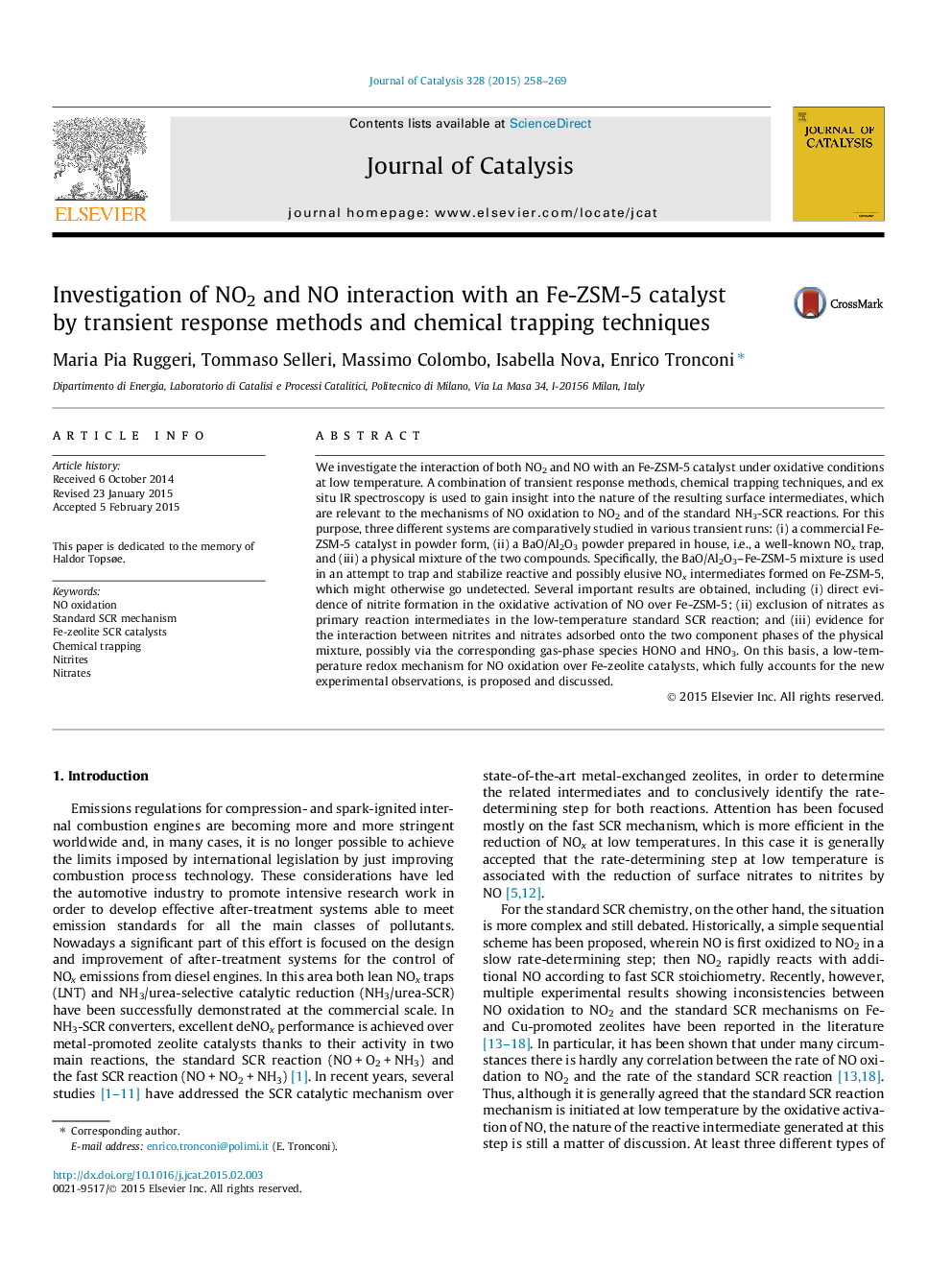| کد مقاله | کد نشریه | سال انتشار | مقاله انگلیسی | نسخه تمام متن |
|---|---|---|---|---|
| 60783 | 47547 | 2015 | 12 صفحه PDF | دانلود رایگان |

• Exposure of a Fe-ZSM-5 + BaO/Al2O3 physical mixture to NO2 forms nitrates on both phases.
• Nitrites are formed from NO + O2 on Fe-ZSM-5 and stored on BaO.
• BaO traps nitrites preventing formation of nitrates on Fe-ZSM-5 from NO + O2.
• In standard SCR adsorbed NH3 may play a trapping role similar to BaO.
• Nitrates are not primary intermediates in NO oxidative activation on Fe-ZSM-5.
We investigate the interaction of both NO2 and NO with an Fe-ZSM-5 catalyst under oxidative conditions at low temperature. A combination of transient response methods, chemical trapping techniques, and ex situ IR spectroscopy is used to gain insight into the nature of the resulting surface intermediates, which are relevant to the mechanisms of NO oxidation to NO2 and of the standard NH3-SCR reactions. For this purpose, three different systems are comparatively studied in various transient runs: (i) a commercial Fe-ZSM-5 catalyst in powder form, (ii) a BaO/Al2O3 powder prepared in house, i.e., a well-known NOx trap, and (iii) a physical mixture of the two compounds. Specifically, the BaO/Al2O3–Fe-ZSM-5 mixture is used in an attempt to trap and stabilize reactive and possibly elusive NOx intermediates formed on Fe-ZSM-5, which might otherwise go undetected. Several important results are obtained, including (i) direct evidence of nitrite formation in the oxidative activation of NO over Fe-ZSM-5; (ii) exclusion of nitrates as primary reaction intermediates in the low-temperature standard SCR reaction; and (iii) evidence for the interaction between nitrites and nitrates adsorbed onto the two component phases of the physical mixture, possibly via the corresponding gas-phase species HONO and HNO3. On this basis, a low-temperature redox mechanism for NO oxidation over Fe-zeolite catalysts, which fully accounts for the new experimental observations, is proposed and discussed.
Figure optionsDownload high-quality image (204 K)Download as PowerPoint slide
Journal: Journal of Catalysis - Volume 328, August 2015, Pages 258–269